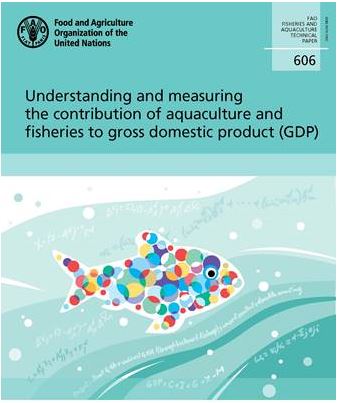Link to the document
 |
| Understanding and measuring the contribution of aquaculture and fisheries to Gross Domestic Product (GDP). It is a technical paper under WAPI, which can provide technical support to FAO work related to the subject, primarily the SDG 14.7.1 - Sustainable fisheries as a percentage of GDP in small island developing states, least developed countries and all countries, and also the Illuminating Hidden Harvests (IHH) project. |
The contribution of aquaculture and fisheries to gross domestic product (GDP) is one of the most widely used indicators of its economic performance. Despite strong interest in and great efforts made towards assessing the contribution of aquaculture and fisheries to GDP, there is a general lack of understanding or consensus on how to properly measure the sector’s contribution to GDP and effectively use the measures for evidence-based policy and planning for sustainable aquaculture and fisheries development. While a fisheries GDP measure has been included in the Sustainable Development Goals (SDGs) of the 2030 Agenda for Sustainable Development (i.e. SDG Indicator 14.7.1: Sustainable fisheries as a percentage of GDP in small island developing states, least developed countries and all countries), it is nevertheless a Tier III indicator for which no internationally established methodology or standards are yet available. This paper contributes to improving the understanding and measurement of aquaculture and fisheries’ contribution to GDP by:
(i) using input-output models (including mathematical formulas and numerical examples) to formulate and clarify a set of measures of aquaculture and fisheries’ contribution to GDP;
(ii) discussing alternative methods to estimate the measures under data-poor environments;
(iii) suggesting an empirical methodology and general guidelines on the estimation and reporting of the measures;
and (iv) exploring how to utilize the measures for evidence-based policy and planning. The conceptual framework and empirical methodology suggested in the paper will help move towards internationally established methodology, standards and guidelines on measuring aquaculture and fisheries’ economic contribution.
Further information:
Junning.Cai@fao.org